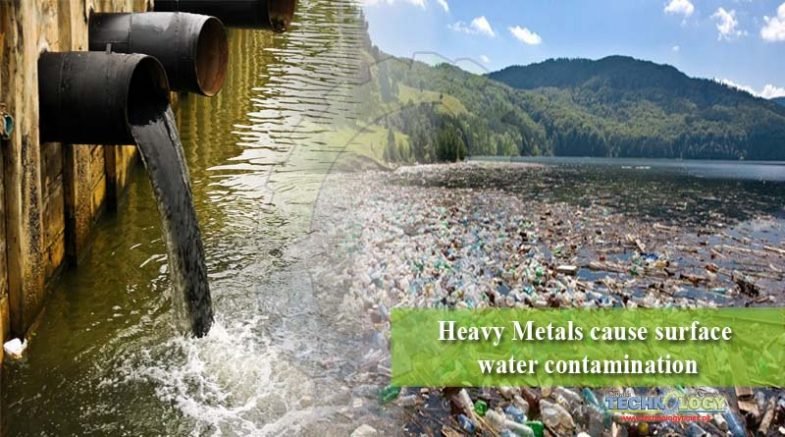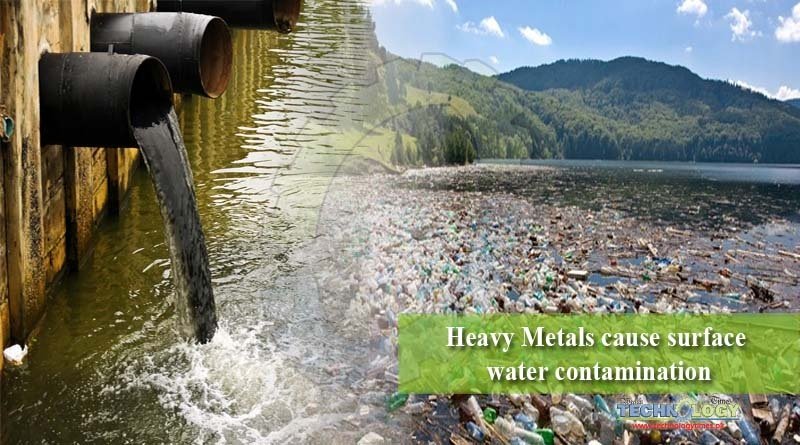Heavy metals can be toxic to human being and life of all other type of living organism like plant, animal and microbes.
 It can be present in industrial waste, municipal solid waste, urban runoff, atmospheric decomposition of coal burning plant and natural weathering of rock and soil. Levels of heavy metals in water have risen globally with increase urbanization and industrialization. There are 50 heavy metals that can be toxic to human beings. Of these, 17 are more toxic and readily available. Common heavy metals that can be toxic to humans are arsenic, cadmium, chromium, copper, lead, mercury and zinc. Copper, zinc and chromium are essential micro nutrients required human body and toxicity increase by enhanced dose.
It can be present in industrial waste, municipal solid waste, urban runoff, atmospheric decomposition of coal burning plant and natural weathering of rock and soil. Levels of heavy metals in water have risen globally with increase urbanization and industrialization. There are 50 heavy metals that can be toxic to human beings. Of these, 17 are more toxic and readily available. Common heavy metals that can be toxic to humans are arsenic, cadmium, chromium, copper, lead, mercury and zinc. Copper, zinc and chromium are essential micro nutrients required human body and toxicity increase by enhanced dose.
Mercury
In certain environmental conditions, complexes of mercury metal form methyl mercury which is mobile and toxic to humans, plants, animal and microbes. In tanning industry, first time recognized that the use of mercury was toxic substance affecting the brains. Today mercury release in smokestack emission from coal burning power plant is the primary source of contamination. Bio accumulation of methyl mercury in freshwater lakes and marine species (sharks, swordfish) has led to warning to pregnant and nursing women to limit the consumption of fish in most part of the United States and Western Europe.
The cycling of mercury is complex and it depends upon physical, chemical and biological aspects of the system. The cycling of mercury in any given area determines the relative toxicity and bio accumulation rate increase in food chain.
Bio accumulation refers the net accumulation of mercury in the body of both biotic and abiotic factors. Bio magnifications is accumulation of toxic substance in successive tropic levels. Mercury in environment present in the form of element mercury (Hg), inorganic mercury compounds (Hg+1 or Hg+2) and organic mercury compounds (HgCH3 or Hg (CH3)2) and also include methyl and dimethyl mercury.
In aquatic ecosystem, mercury causes several complication and transformation process. Most bio available and bio accumulation form of mercury is methyl mercury. The methylation of mercury involves a group of bacteria known as sulfate reducing bacteria. Several species of sulfate reducing bacteria include stains of Desulfovibrio and Desulfobactor.
Mercury in all form is dangerous cause development effects in the fetus and toxic effect on kidney and liver of adults and children. Sublethal effects it can affect the ability of speak, feel, taste, see and movement. Mercury easily passed from pregnant women to fetus and even a very small quantity effect the development of central nervous system. Due to bio magnifications, the most common route of exposure is consumption of contaminated fish.
Arsenic
Arsenic is an element widely distributed throughout the earth crust. In water, arsenic present in dilution of minerals and ores may also be present in groundwater. Arsenic use in industry, agriculture, byproduct of copper smelting, mining and coal burning. Chromated copper arsenate is one form of arsenic most use food preservative in the U.S and contains 20% arsenic. Inorganic arsenic found in many forms in the environment but in natural water it occurs as trivalent arsenite or pentavalent arsenate. Arsenite form of arsenic is more toxic than arsenate. Organic form of arsenic is less toxic and readily eliminated by normal body function.
Symptoms include vomiting, esophageal and abdominal pain and bloody diarrhea. Long time exposure cause cancer of the skin, lungs, urinary bladder, kidney and also cause skin change as pigmentation and skin thickening. One of largest mass poisoning in the world recently occurred in Bangladesh. Where 53 out of 64 districts had groundwater contaminated with arsenic. The groundwater is contaminated with arsenic due to use of irrigation in intensive agriculture.
Chromium
Chromium is present in natural deposits. Chromium is important in industrial metals, it is use in alloys as stainless steel, protective coating on other metals, magnetic tapes, pigments for paints, cement, paper, rubber and floor covering. Chromium has many oxidation states, but most common are +2 +3 and +6 with +3 is more stable and -4, -5 are relatively rare. Toxicity of chromium is dependent on its oxidation state. Chromium (iii) is an essential nutrient and found in food and safe to use for humans, hexavalent form of chromium (VI) is carcinogenic cause skin problem and lungs cancer in humans. It causes cancer in lungs and sinonasal cavity depends upon toxicity and exposure.
Selenium
Selenium in nature, occur as selenide and combined with sulfide, copper, lead, nickel or silver. Selenium and chromium is a micronutrient required in small quantity in humans and animals to produce amino acid selenocysteine. In narrow range, selenium is beneficial nutrient and toxicity means to monitor it in the environment especially in that area where is alkaline soil present because selenium is found in those areas in its most oxidized and in toxic form.
Due to selenium, it is possible that the problem of other heavy metals arise in aquatic system primarily due to irrigation and farming practices. Short term toxicity of selenium includes damage to the peripheral nervous system, hair and fingernail changes and irritability. In long term, symptoms include damage the circulatory system, kidney and liver tissues.
It is bio accumulation however; selenium and mercury not increase upward through food chain because it is not bio magnifying. Selenium toxicity effect both terrestrial and aquatic life. Selenium effects the survival and growth of juvenile fish and offspring of adult fish. Affected fish have eaten by birds suffering from toxicity of selenium and produce offspring also affected by selenium toxicity. Selenium uptake by terrestrial plants, which effected both domestic and wildlife species.
Cadmium
Cadmium is a toxic element which is persistence in nature. It is not required by all living organisms and cause diseases in plants and animals. Cadmium released in environment by both natural and anthropogenic activities such as mining, smelting, refining, use of phosphate fertilizer and sewage sludge etc. In industry, it is release from plastics, pigments, enamels, ceramics and steel plating. In some industries, cadmium produce as byproduct and its toxicity affect bones, kidney, reproduction, respiratory system and cancer in human beings.
In plants, minute quantity of cadmium can be toxic and accumulate in edible portions, root and shoot. In drinking water, cadmium toxicity is less but it is increased by the release of industrial waste, leeching through pipes and seepage from hazardous waste sites. In food, some plants such as rice, cereal grains and potatoes take up cadmium as compare to any other heavy metals. It also enters in food chain from water.
Conclusion
If we properly dispose or dump the all hazardous waste which are release from industry and other mining and smelting process that are mixed in water and cause harmful effect on humans, plants and animals life we away from the dangerous. Some are micro nutrients, their quantity increase change them into heavy metals we should overcome the use of these. Disposal of cadmium related material should be overcome the toxicity of cadmium hazards.
The treatment of water which is contaminated with heavy metals can secure us from the disease cause by drinking the contaminated water. We should reduce the anthropogenic activities in every field of our life such as industry and agricultural tillage practices. We use masks covers our mouth because some metals in so small form we inhale cause respiratory diseases.
If we properly dispose or dump the all hazardous waste which are release from industry and other mining and smelting process that are mixed in water and cause harmful effect on humans, plants and animals life we away from the dangerous. Some are micronutrients, their quantity increase change them into heavy metals we should overcome the use of these. Disposal of cadmium related material should be overcome the toxicity of cadmium hazards. The treatment of water which is contaminated with heavy metals can secure us from the disease cause by drinking the contaminated water. We should reduce the anthropogenic activities in every field of our life such as industry and agricultural tillage practices. We use masks covers our mouth because some metals in so small form we inhale cause respiratory diseases.
